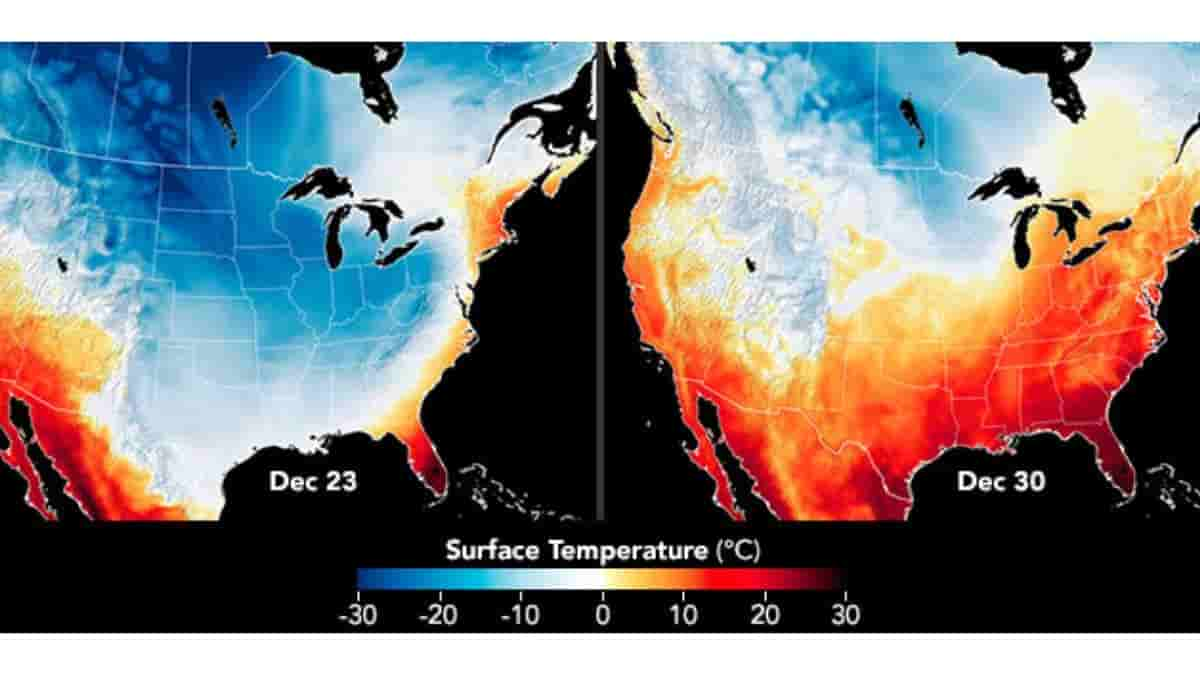NASA Earth Report on the Changing Weather Patterns
NASA Earth’s tweeted a recent report on the temperature change on Jan 5, Thursday

The last week of December met with freezing temperatures in the Eastern cities of America. Several parts faced blizzards and snowstorms during Christmas week. More than 50 inches deep snow covered areas of upstate New York and Canada. Just one week later and at the start of the new year, unexpected warm temperatures have been dramatically surging in these areas. The AccuWeather forecasters have predicted that warm weather will prevail these areas making it feel like spring has arrived earlier than its date.
NASA Earth’s tweet on Jan 5, 2023 shows an animation of the odd weather change calculated from December 2022 to early January 2023. This, was measured by using the Goddard Earth Observing System (GOES) global model that calculates physical processes in the atmosphere.
Judah Cohen, a visiting scientist at the Massachusetts Institute of Technology and a forecaster with Atmospheric and Environmental Research (AER) on analysing the data, observes that the polar vortex (band of strong westerly winds) that circulates around the North Pole in winter has been extending making it weak. The strong Polar vortex prevents the cold Arctic air from spilling. When this Polar vortex weakens, the Jetstream in the troposphere tends to extend southwards letting the cold Arctic air to flow down into the midlatitudes. The Polar vortex stretches for at the most a week before it settles into its original position. this sudden straightening of the Polar vortex can be studied as a key reason for the sudden warming up of the these areas.
Another concern from the scientists studying the stratosphere is that the disruption of the Polar vortex has become more common as global temperatures have been rising since the the 1980’s.
As some people disagree that these weather changes calculated for a short amount of time can give accurate data, Cohen states in the NASA earth observatory, “Not everybody agrees with us. It’s still contested science, but I am confident that we’ll see more and more examples of these stretching events in the stratosphere followed shortly after by cold snaps in the midlatitudes as the Arctic climate warms and changes…The stretching of the polar vortex we saw in December 2022 definitely fits that pattern.”
2022 ended with a shiver, but the start of 2023 broke a sweat. 🥶🥵
— NASA Earth (@NASAEarth) January 5, 2023
This weather whiplash may have been caused by changes in the polar vortex, the band of strong westerly winds over the Arctic. Details: https://t.co/gnOAqDOncS pic.twitter.com/4QDmgsNsE5


